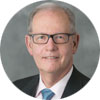Download PDF

Health care expenditures in the United States are closing in on becoming one-fifth of our gross domestic product. In 2017, they totaled an estimated 3.49 trillion dollars—or $10,348 for every American. Over the past decade, they continued to grow faster than the rate of inflation.
A linchpin strategy for the Centers for Medicare & Medicaid Services (CMS) to reduce costs has been the Medicare Shared Savings Program’s (MSSP) Accountable Care Organization (ACO), which was introduced as a part of the Affordable Care Act, or Obamacare. ACOs have been active since 2012. Loosely defined, they are groups of facilities and providers (including physicians) that agree to be held accountable to standards and processes for quality, cost, and experience of care for an assigned Medicare fee-for-service beneficiary population. They have different “tracks” that, among other things, define the amount of shared financial risk between CMS and the ACO. In 2018, MSSP ACOs provide care to 10.5 million (which is about 20% of) Medicare beneficiaries.
The ACO financial scorecard for 2017 is in. After more than 5 years, thousands of pages of enabling regulations, and millions of patients served, how have they done at reducing expenditures?
According to CMS, the 472 MSSP ACOs resulted in a net savings to CMS of $313.7 million. This sounds big, but let’s put it in perspective. It is:
- 0.33% of the total spent on health care by the ACOs ($95 billion);
- a savings of $36 per ACO program Medicare beneficiary—a fraction of a single outpatient visit; and
- about the cost of 1 new F-22 fighter jet.
Let’s put it in ophthalmologic terms. A 10% shift in anti-VEGF drug use for eye disease to lower-cost drugs would eclipse the entire net savings in all of the U.S. ACO program.
The ACO program is designed to encourage financial risk-taking. The more downside risk an organization assumes, the more upside benefit can accrue to it. It might therefore seem intuitive that the best-managed and most advanced ACOs (those that took on risk to reap greater financial rewards for themselves) would in fact spend less per beneficiary and save more for CMS. In fact, the reverse was true. Those that took downside risk spent $254 more per beneficiary than those that didn’t! And 41% of the participating organizations actually increased Medicare spending. Yet, the 2019 proposed changes to the Medicare Quality Payment Program contain rules that are intended to accelerate the transition to downside risk.
Does this mean the ACO program is a failure and should be thrown on the health care reform trash heap? Advocates of ACOs would argue that—even though after 5 years the program has yet to generate a net financial benefit for Medicare—its performance in 2017 was the best year so far. The longer an ACO is in the MSSP, the more money it saves. In addition, advocates point to some encouraging quality metric data in measures such as reduction of hospital readmissions.
What does this all mean for ophthalmologists? Fewer than 70% of Medicare beneficiaries are enrolled in traditional fee-for-service Medicare (as opposed to Medicare Advantage). In the Quality Payment Program, although over 90% of specialists are in the Merit-Based Incentive Payment System, policy is intended to steer physicians to Alternative Payment Models—of which ACOs are supposed to be a dominant form. ACOs have complex and expensive standards for information technology, clinical and service standards, patient referral, and resource use. Internal guidelines for allocation of any shared savings generally are unfavorable to surgical specialists. As each ophthalmologist carefully weighs the pros and cons of participating in an ACO, we should all recognize that even after more than 5 years, the economic model remains unproven. Savings of less than one-third of 1% can hardly be considered a solution.